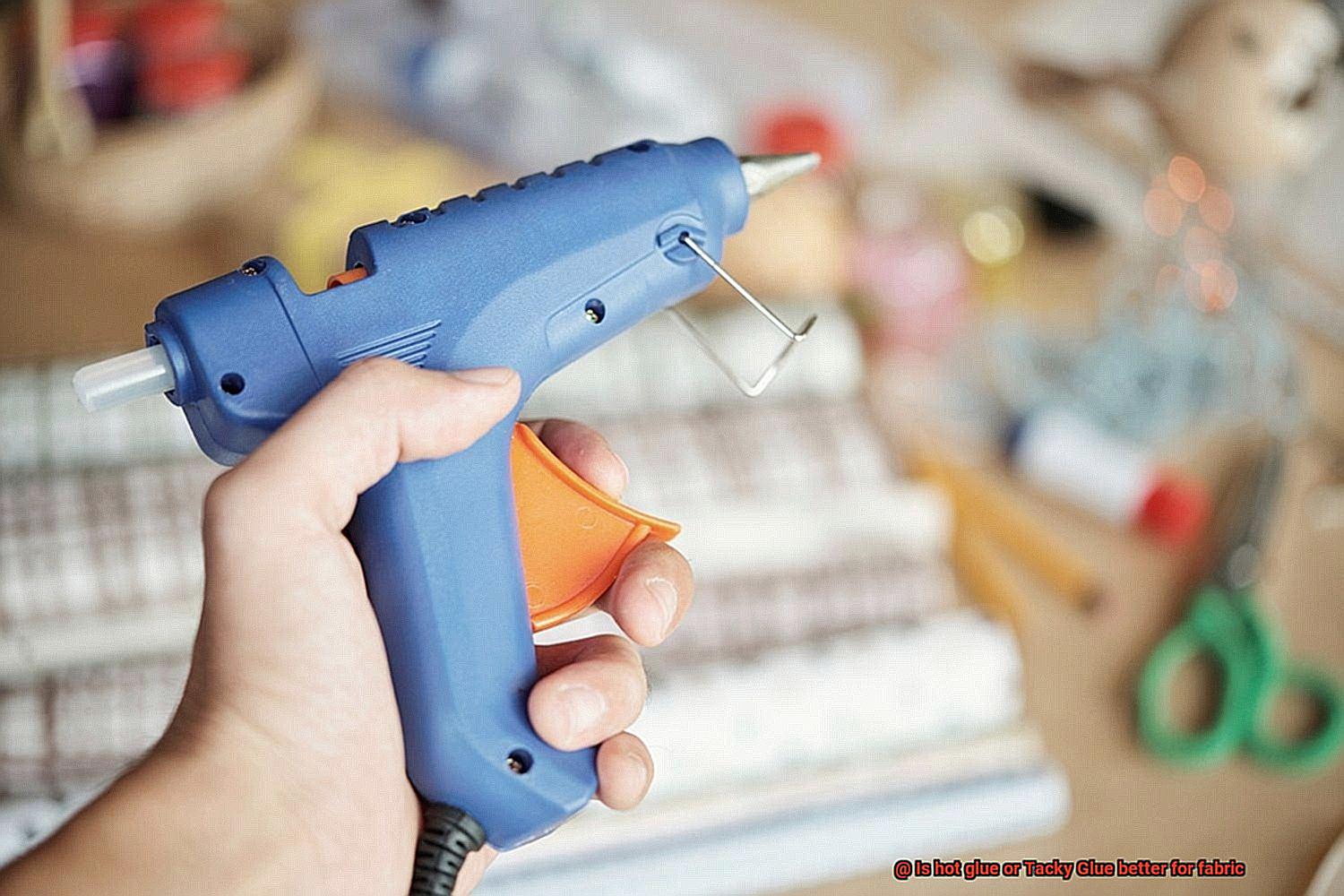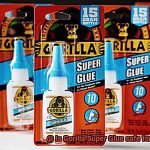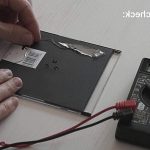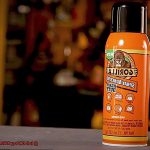When it comes to sticking fabrics together, choosing the right glue is like finding the perfect dance partner – it can make or break the whole routine. In this blog post, we’ll explore the fierce competition between hot glue and tacky glue, two adhesive heavyweights vying for the title of fabric bonding champion. So grab your popcorn and get ready for an informative showdown that will help you decide which glue is best for your fabric projects.
Hot glue, that magical thermoplastic adhesive that turns liquid when heated, has gained a reputation as a speed demon in the crafting world. Its lightning-fast bond and ability to work on almost any material make it a crowd favorite. But hold on tight, because there are some downsides when it comes to using hot glue on fabric.
The main drawback? Hot glue can be as rigid as a bodybuilder flexing at a beauty pageant. This stiffness might not be ideal if you’re aiming for comfort or flexibility in your fabric creations. Plus, let’s not forget about its fiery nature – high temperatures can turn delicate fabrics into molten messes faster than you can say “oops.” That’s why it’s crucial to test hot glue on a small patch of fabric before going full throttle.
Now let’s meet our contender – tacky glue. Also known as fabric glue, this adhesive takes a gentler approach to bonding fabrics. Made specifically for textiles, tacky glue offers a more forgiving and flexible bond. It dries with grace and leaves fabrics free to move and groove without feeling like they’re trapped in an iron maiden.
But don’t hit pause just yet. Tacky glue does have one minor drawback – it’s not exactly Usain Bolt when it comes to drying time. While this slower pace allows for greater precision during application, you might find yourself twiddling your thumbs as you wait for the glue to fully set. And keep in mind that some tacky glues might not withstand repeated washes or hold up as well over time, especially in areas that experience a lot of stress.
In conclusion, the hot glue vs. tacky glue battle is no easy decision. It all comes down to what you’re looking for in a fabric adhesive. If speed and versatility are your main squeeze, hot glue will be your go-to dance partner. But if you crave flexibility and a softer touch, tacky glue will twirl you around with
Advantages of Hot Glue
Contents
When it comes to fabric projects, finding the right adhesive is crucial for achieving professional and long-lasting results. Among the many options available, hot glue stands out as a go-to choice for crafters. In this blog post, we will explore the numerous advantages of using hot glue for fabric projects and why it is every crafter’s dream adhesive.
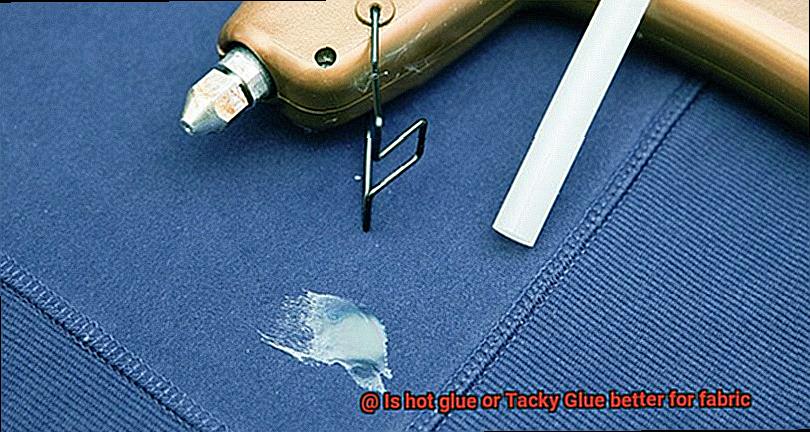
Strong Bond:
Hot glue offers a powerful bond that is essential for fabric projects requiring durability and longevity. Whether you’re attaching fabric to furniture, creating costumes, or working on fabric-based crafts, hot glue’s high adhesive strength ensures your creations stay intact even with regular use.
Quick Drying Time:
Time is of the essence when working with delicate fabrics. Unlike other adhesives that require hours to dry, hot glue has a quick drying time. This allows you to move forward with your project without worrying about shifting or wrinkling fabrics. With hot glue, you can secure fabric pieces together in an instant and continue working on your masterpiece.
Versatility:
Hot glue is a versatile adhesive that can be used on various types of fabric, including both natural and synthetic fibers. It adheres well to different textures and surfaces, making it suitable for lightweight or heavy fabrics alike. No matter what type of fabric you’re working with, hot glue provides a secure bond that withstands the test of time.
Easy Application:
Applying hot glue to fabric is a breeze. All you need is a hot glue gun and some glue sticks. Once the gun is heated, simply squeeze the trigger to release the melted glue onto the fabric surface. The glue adheres quickly, allowing you to position and bond fabric pieces as needed. Whether you’re a beginner or an experienced crafter, hot glue’s simplicity of application makes it a favorite choice.
Temporary Bonding Option:
In some cases, you may require a temporary bond for your fabric project. Hot glue offers the advantage of creating both permanent and temporary bonds. By using less glue or applying it in smaller amounts, you can easily remove or reposition fabric pieces without leaving any residue or damage behind.
Availability and Affordability:
Hot glue sticks and guns are widely available in craft stores, hardware stores, and online marketplaces. They come in various sizes and quantities, making it easy to find the right amount for your project. Additionally, hot glue is generally affordable, especially when compared to other specialized fabric adhesives. Its accessibility and cost-effectiveness make it a popular choice among crafters and fabric enthusiasts.
Disadvantages of Hot Glue
Hot glue is often hailed as a crafters’ best friend, but when it comes to fabric projects, it’s not all rainbows and unicorns. While hot glue certainly has its benefits, it’s essential to consider its disadvantages before embarking on your next fabric endeavor. In this article, we’ll explore the downsides of using hot glue for fabric projects and how they can impact your creative journey.
Messy Application:
One of the most significant disadvantages of hot glue is its messy nature. When applied, it tends to drip and string, making it difficult to achieve precise and clean lines. This can be frustrating, especially when working on intricate fabric designs that require a neat finish. The globs and strings of glue can create a messy appearance and compromise the overall aesthetic of your project.
Damage to Delicate Fabrics:
Hot glue’s high temperature can pose a risk to delicate fabrics. It has the potential to melt or warp synthetic materials, leaving behind visible marks or residue. This drawback limits the range of fabrics you can comfortably work with, as you have to be cautious about their heat sensitivity. Delicate fabrics such as silk or chiffon may be particularly susceptible to damage from hot glue, making it unsuitable for projects involving such materials.
Lack of Flexibility:
When working with fabrics that need to stretch or move, hot glue’s lack of flexibility becomes apparent. Over time, the glue may crack or become brittle, particularly if the fabric experiences frequent movement or stretching. This can compromise the durability and longevity of your project. If you’re creating clothing or accessories that require flexibility or have structural elements that need to withstand wear and tear, hot glue may not be the best choice.
Difficult Removal:
Mistakes happen, but fixing them can be challenging with hot glue. Removing it from fabric without damaging the material can be a tedious task. Often, it leaves behind a stubborn residue that requires extra effort to eliminate completely. This can be time-consuming and may result in visible marks or stains on the fabric. If you value the ability to easily correct errors or make adjustments, hot glue may not be the most forgiving adhesive option.
Limited Drying Time:
Hot glue dries quickly, which may seem like an advantage initially. However, this rapid drying time leaves little room for adjustments or repositioning once applied. For complex fabric projects that require precise alignment and positioning, this can be a significant drawback. Once the glue sets, it becomes difficult to make changes, leading to potential frustration and rework.
Advantages of Tacky Glue
This versatile adhesive offers a range of advantages that make it the ideal choice for any crafting need.
First and foremost, tacky glue is incredibly versatile. It has the ability to bond a wide range of materials, including fabric, paper, wood, and even some plastics. This means that you can use tacky glue for a variety of crafting projects, making it an essential tool in your craft arsenal.
One of the standout benefits of using tacky glue for fabric projects is its flexibility. Unlike hot glue, which can dry stiff and rigid, tacky glue remains flexible even after it dries. This is crucial when working with fabrics, as it allows the material to maintain its natural drape and movement. Whether you’re embellishing a garment or creating fabric art, tacky glue ensures that your fabric retains its softness and flexibility.
In terms of usability, tacky glue is a dream come true. It comes in a bottle with a narrow applicator tip, allowing for precise application on fabric surfaces. Its slightly thicker consistency prevents it from seeping through the fabric fibers and causing any visible stains. Even beginners will find it easy to use, making tacky glue accessible to crafters of all skill levels.
When it comes to drying time, tacky glue shines once again. While drying times may vary depending on the brand and environmental conditions, tacky glue generally sets within 30 minutes to an hour. This quick drying time is advantageous, especially if you’re working on time-sensitive projects or need to move on to the next steps quickly.
But what about when your fabric creation needs to be washed? Fear not. Many brands offer tacky glues that are specifically formulated to be washable. This means that your fabric pieces bonded with tacky glue can withstand machine washing or handwashing without losing their adhesive properties. This is perfect for clothing embellishments or fabric appliques that may require laundering.
And here’s the cherry on top – tacky glue is non-toxic. Most brands available in the market today are safe for use, making them suitable for various age groups. This is particularly important when working on projects with children or using glue in a well-ventilated area. Always double-check the label of the specific brand you are using to ensure it is non-toxic.
Disadvantages of Tacky Glue
Today, we embark on a journey to uncover the hidden drawbacks of tacky glue. While this adhesive superhero boasts numerous strengths, it is vital to shed light on its disadvantages when working with fabric projects. So, gear up and read on.
Sluggish Drying Time:
Tacky glue may possess many superpowers, but quick-drying is not one of them. Unlike its counterpart, hot glue, tacky glue takes longer to set. This can be exasperating when deadlines loom or you need to make swift progress.
Potent Odor:
Just like any adhesive, tacky glue has a distinctive smell. Some crafters find this odor overpowering, particularly those with allergies or sensitivities. It’s best to work in well-ventilated areas or explore alternatives if you’re sensitive to strong scents.
Feeble Bond Strength:
Tacky glue’s bonding powers sometimes fail when it comes to heavy fabrics or materials that demand extra hold. For projects requiring a secure attachment, like upholstery or heavy-duty garments, hot glue emerges as the better choice.
Visible Residue/Staining:
One unfortunate downside of tacky glue is its propensity to leave behind visible residue or stains on particular fabrics. Nothing tarnishes a beautifully crafted piece more than unsightly marks that refuse to budge. Always conduct a small test before committing to widespread application.
Limited Heat Resistance:
When it comes to heat resistance, tacky glue falls short of hot glue’s superpowers. If your fabric project will face high temperatures or requires ironing, opt for hot glue instead.
Untidy Application:
The liquid consistency of tacky glue can lead to messier application, especially for those with unsteady hands. Drips and smears are not uncommon, and unintentional glue marks have no place marring your masterpiece.
Unsuitable for Delicate Fabrics:
Sheer or delicate fabrics can pose a challenge for tacky glue, as it may seep through the material, leaving visible marks or stains. Exercise caution when using tacky glue on delicate fabrics and consider alternatives such as fabric glue or sewing.
Limited Versatility:
While tacky glue is a useful sidekick for many fabric projects, it may fall short in certain applications. When attaching trims, embellishments, or creating three-dimensional designs, hot glue proves to be the more versatile adhesive superhero.
Comparing Hot Glue and Tacky Glue for Fabric Projects
When it comes to fabric projects, the choice of adhesive can make or break your creation. Two popular options are hot glue and tacky glue, each with their own advantages and disadvantages. So, let’s explore the world of glues and see which one takes the crown for fabric projects.
Strength and Durability:
Hot glue is renowned for its strength and durability. It forms a robust bond quickly and can endure heat and washing. This makes it perfect for projects that require a secure hold, such as attaching embellishments or creating sturdy seams. Tacky glue, on the other hand, provides a more flexible bond, making it suitable for projects that require some movement or flexibility in the fabric.
Ease of Application:
Hot glue guns are easy to use and widely available. They melt glue sticks into a liquid state, allowing for precise application. However, the hot temperature of the glue can be a safety concern, so caution must be exercised. Tacky glue has a thicker consistency, making it easier to control during application. It also allows for repositioning and adjustment before it sets.
Cost:
In terms of cost, tacky glue is generally more affordable than hot glue guns. Hot glue guns require an initial investment in the gun itself, as well as ongoing purchases of glue sticks. Tacky glue usually comes in larger bottles and can be used for multiple projects without additional costs.
Other Factors:
Hot glue has a tendency to leave a visible residue or harden too stiffly on certain fabrics. Tacky glue, on the other hand, may not be as strong or long-lasting as hot glue. Additionally, tacky glue has a potent odor that may not be suitable for those with sensitivities.
Temperature Considerations when Using Hot Glue on Fabric
Today, we delve into the battle between two adhesive warriors: hot glue and tacky glue. While both choices have their strengths and weaknesses, this post will focus on temperature considerations when using hot glue on fabric. So grab your glue guns and let’s explore the world of temperature and fabrics.
Temperature Matters:
When using hot glue on fabric, temperature is a crucial factor to consider. Different fabrics have varying heat tolerance levels, so understanding this can save you from potential disasters. Delicate fabrics like silk or satin require extra care, as they may not withstand high temperatures without damage or discoloration. On the other hand, sturdier fabrics like denim or canvas can handle higher heat levels.
The Temperature Dance:
To ensure a successful bonding experience, start with a lower temperature setting on your hot glue gun. This allows you to test the glue’s effect on the fabric before committing to a higher temperature. Gradually increase the temperature if necessary, but always exercise caution and closely monitor the fabric.
Avoiding Glue Mishaps:
Nobody wants unsightly residue or burned holes in their fabric projects. To prevent hot glue from seeping through thin or delicate fabrics, stick to a lower temperature setting. Higher temperatures can cause the glue to melt through, leaving frustrating marks or even damaging the fabric. Remember, we want our projects to be flawless.
Time is of the Essence:
Drying time is another essential aspect to consider when working with hot glue on fabric. If the glue takes too long to dry, it can compromise the integrity of your project. Higher temperature settings typically result in faster drying times, but finding the right balance is key to avoiding damage to the fabric.
Adjustable Temperature Settings to the Rescue:
Some hot glue guns offer adjustable temperature settings, giving you the power to find the ideal temperature for your specific fabric and project. This feature is particularly beneficial when working with a variety of fabrics or engaging in intricate work that requires precise control over the adhesive’s application. It’s like having a secret weapon in your crafting arsenal.
Conclusion:
When using hot glue on fabric, temperature considerations are vital for successful and damage-free projects. Remember to check the heat tolerance of your fabric, start with a lower temperature setting, and monitor both drying time and the glue’s effect on your fabric. And if you’re looking for extra control and flexibility, consider investing in a hot glue gun with adjustable temperature settings.
Residual Effects of Hot Glue vs Tacky Glue on Fabric
In the world of crafting and DIY projects, the choice of adhesive can make or break your creation. When it comes to bonding fabric, two popular options are hot glue and tacky glue. However, these glues have distinct differences in their residual effects on fabric that are worth exploring.
First and foremost, let’s talk about residue visibility. Hot glue, when applied to fabric, can leave behind a hardened spot that is often visible to the naked eye. Imagine carefully stitching together delicate lace only to have a glaring glob of glue ruin the seamless look. On the other hand, tacky glue dries clear and leaves minimal residue, ensuring that your fabric masterpiece remains flawless.
Next, let’s consider flexibility. Hot glue forms a stiff and rigid bond with fabric that can hinder its natural drape and movement. This can be problematic if you’re creating garments or accessories that require flexibility. In contrast, tacky glue creates a more flexible bond that allows the fabric to retain its natural texture and movement. Whether you’re crafting a flowing dress or a soft pillow, tacky glue will ensure your fabric retains its desired form.
Lastly, we must examine washability. If you’re making fabric items that are meant to be washed or dry cleaned, it’s crucial to choose an adhesive that can withstand these processes. Hot glue, unfortunately, may not hold up well when exposed to water or dry cleaning chemicals. Over time, it can become brittle and peel off, leaving your hard work in tatters. Tacky glue, on the other hand, is specifically designed for fabric applications and is known for its ability to withstand washing and dry cleaning. With tacky glue, you can create items that endure the test of time.
mORL1jJSdlk” >
Conclusion
In conclusion, when it comes to bonding fabric, hot glue and tacky glue each have their own advantages.
Hot glue provides a strong and durable bond that can withstand heat and washing, making it ideal for heavy-duty fabrics or projects that require a long-lasting hold. On the other hand, tacky glue offers a more flexible bond that is better suited for lightweight fabrics or delicate materials.
It dries clear and remains pliable, allowing for easier manipulation of the fabric. Ultimately, the choice between hot glue and tacky glue depends on the specific needs of your project.
Experimenting with both types of glue may also be beneficial to determine which one works best for your particular application.

